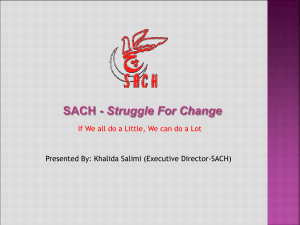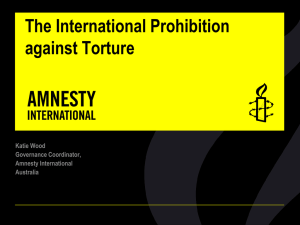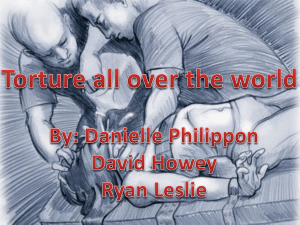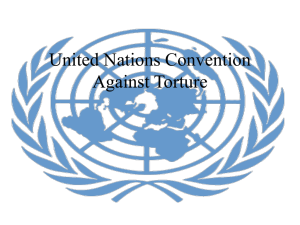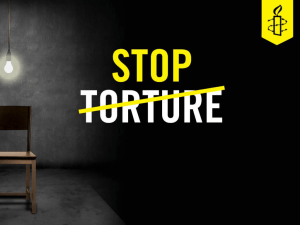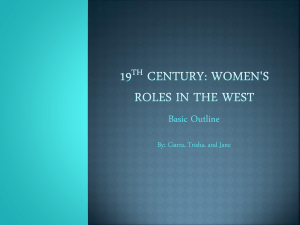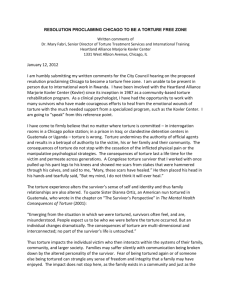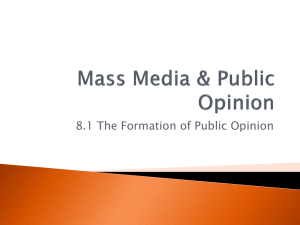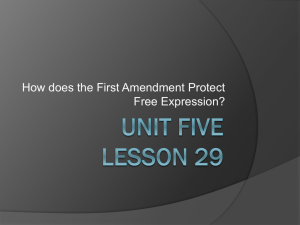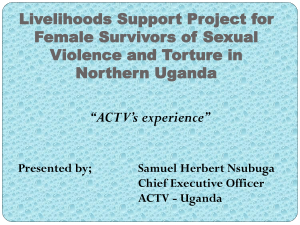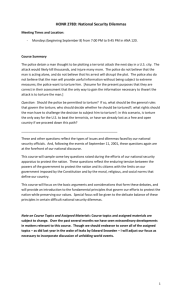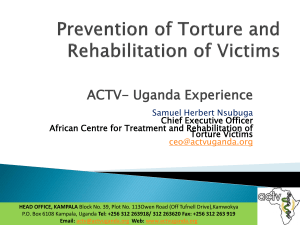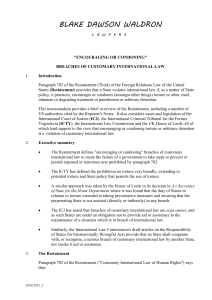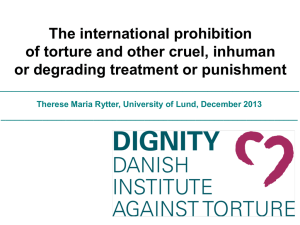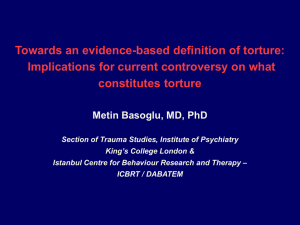Slides: Lesson 10 - Equality and Human Rights Commission
advertisement
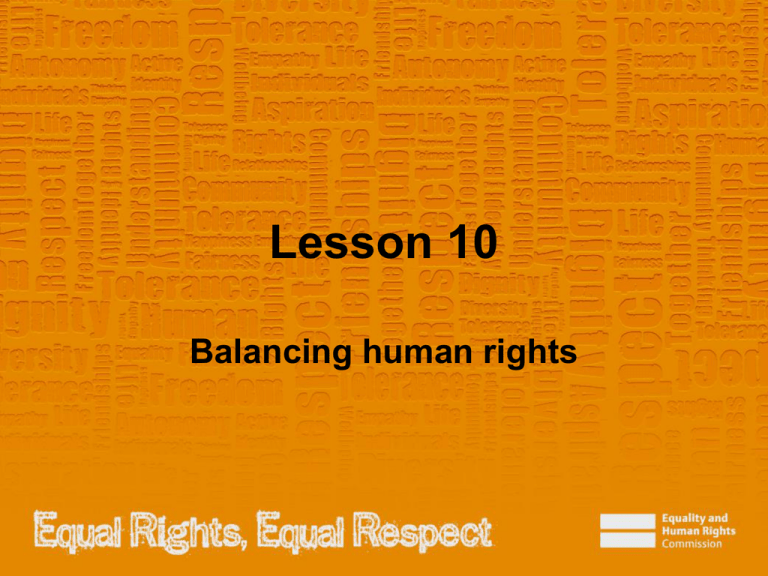
Lesson 10 Balancing human rights Note to teacher • These slides provide all the information you need to deliver the lesson. • However, you may choose to edit them and remove some of the detail to make them appropriate for your students. • To edit these slides, you should save them to your computer with a different file name. Conflict What do we mean by conflict? If two friends are disagreeing about where they should go for an evening out this could be considered a conflict of two opinions. How could this be resolved? Conflict • Friend A will have one opinion about where they should go. • Friend B will have another opinion about where they should go. Friend A: I think we should go to the cinema. Friend B: I think we should go to the roller disco. Conflict • Both friends will need to put forward their opinions and these need to be weighed up until one comes out on top. • One persons opinion will be compromised to enable the other persons opinion to be carried out. • Otherwise the conflict will continue and cannot be resolved. Friend A: I think we should go to the cinema. Friend B: I think we should go to the roller disco. Conflict • In the same way two individuals’ opinions can conflict, so can two individuals’ human rights. • When human rights conflict, they need to be balanced by one human right being limited or restricted; similar to the example of conflicting opinions. • We are going to look at how and why human rights sometimes need to be limited or restricted in this lesson. Balancing human rights • Today’s learning objectives: – Understand that some human rights can be limited. – Understand that some human rights are absolute. – Understand that human rights need to be balanced to protect individuals and wider society. Limiting human rights • Sometimes our human rights need to be limited. • They can be limited if one person is using their rights in a way that threatens another person or wider society. • For example, if the police suspected that someone was carrying a gun, would it be ok to limit their right to respect for private and family life by searching them? In this instance, by limiting the suspect’s right to respect for private and family life, the police could help to protect public safety. Absolute rights • Not every human right can be limited. Some must be upheld in all circumstances! • These are called absolute rights. • Is it ever ok to torture someone or hurt them badly? • The absolute right not to be tortured or treated in a way that is cruel or humiliating can never be limited or taken away. Cruelty can never be allowed! Absolute rights • Is it ever ok to force children to work? • The right not to be required to do forced labour or be treated as a slave must always be protected! • No one can ever force you to work or to be a slave! Real-life conflict • We are going to look at a real-life case where two individuals rights were conflicting. • Read the article on the worksheet in pairs. • Answer the questions that follow and try to identify which human rights are conflicting. Whose rights should be limited? Naomi: Right to respect for private and family life Naomi: Right to respect for private life Newspaper: Right to freedom of Newspaper: Right expression to express your view and opinion Conflicting rights Naomi: Right to respect for private and family life Newspaper: Right to express your view and opinion In this case, the newspaper’s right to express their views and opinions was in conflict with Naomi’s right to respect for private and family life. The newspapers right to express their views and opinions needed to be limited. Real-life conflict - outcome Case summary: Although a celebrity had misled the public in asserting that she did not take drugs, the publication of details of her treatment for drug addiction together with covertly taken photographs amounted to an interference with the right to respect for private life. The potential for the disclosure of information to cause harm was an important factor to be taken into account when assessing the extent of the restriction that was needed to protect a person's right to privacy. Limiting human rights task • Imagine you are the Head Teacher. • You need to review some scenarios and decide if you would limit the student’s rights or not. Limiting human rights Scenario 1 • The school suspects that a student has a knife in their bag. – The Head Teacher could limit the student’s right if it posed a threat to the safety of other pupils. – They could limit the student’s right to respect for private and family life by searching the student’s bag. Limiting human rights Scenario 2 • A Muslim student asks the Head Teacher if they can hold a debate about Islamic Fundamentalism. – The Head Teacher could allow the student to hold the debate but could limit their right to express their views and opinions by stating that the student is not allowed to criticise homosexuality, make sexist comments or take a negative line towards other religions / beliefs. – This could be limited to protect other students’ right to have their own thoughts, beliefs and religion and to prevent disorder. Limiting human rights Scenario 3 • Students hold a demonstration on school grounds against tuition fees but the protest turns violent. – To protect the safety and rights of the other people in the school and to prevent disorder, the Head Teacher could cancel the demonstration, limiting the student’s right to get together with other people in a peaceful way. What are the limits? • What are the limits to our right to express our views and opinions? • When we are using our right to express our view and opinion in a way that it incites racial hatred or encourages crime, then it can be limited. • Should these people’s views be limited or not.... What are the limits? “I think David Cameron is a rubbish Prime Minister” ? ? What are the limits? “I hate bankers and think we should graffiti their cars” ? ? What are the limits? “I think all Irish travellers should be banned from our country” ? ? What are the limits? “I don’t like Indian food” ? ? Absolute or not? • The right not to be tortured or treated in a way which is cruel or intimidating is an absolute right. • This means it can never be limited or restricted. • Do you think this should be an absolute right? • Are there any circumstances where you think torture should be allowed? • Discuss this scenario and these two points of views... Absolute or not? • Scenario: An illegal immigrant who has committed a crime in the UK is allowed to stay in Britain because if they were sent home, they would be tortured in their own country. They are in our country illegally and have committed a crime so they should be sent home! Torture must never be allowed. It is an absolute human right because no human being should ever be tortured. They should not be sent home. Absolute or not? • In reality, the courts would decide how to resolve this situation. • They would: – Firstly decide whether there is a real threat of torture taking place. This is determined by examining the facts and evidence of the case, for example, whether the individual has suffered torture in the past, has been threatened with torture, or is associated with a group of individuals that have been or are at risk of torture. – Secondly they consider the level of severity of the torture. There must be a minimum level of severity for the case to be considered. Absolute or not? • If it is determined that the threat of torture is (1) real and (2) presents a severe risk, then the absolute right to be protected from torture will be upheld. • Unlike limited human rights, it won’t need to be balanced with the possibility that the individual might commit further crime. Human rights • Human rights provide a standard for how the Government should treat its citizens and they are there to protect individuals. • However, because some can be limited in certain circumstances it means people can disagree about how and when they should be limited or exercised. • But human rights provide a framework that can be used to discuss and debate different issues. Helping everyone to live together • It is important to recognise that we all have human rights. • Sometimes your human rights might conflict with another person’s human rights and may need to be balanced. • The school has responsibility for making sure that this happens, and they can restrict an individual’s rights when it is clear there is a conflict of rights. • When everyone’s human rights are balanced and protected, it can help everyone to get along and live together happily. What have we learnt? That some human rights can be limited. That some human rights are absolute. That human rights need to be balanced to protect individuals and wider society.


